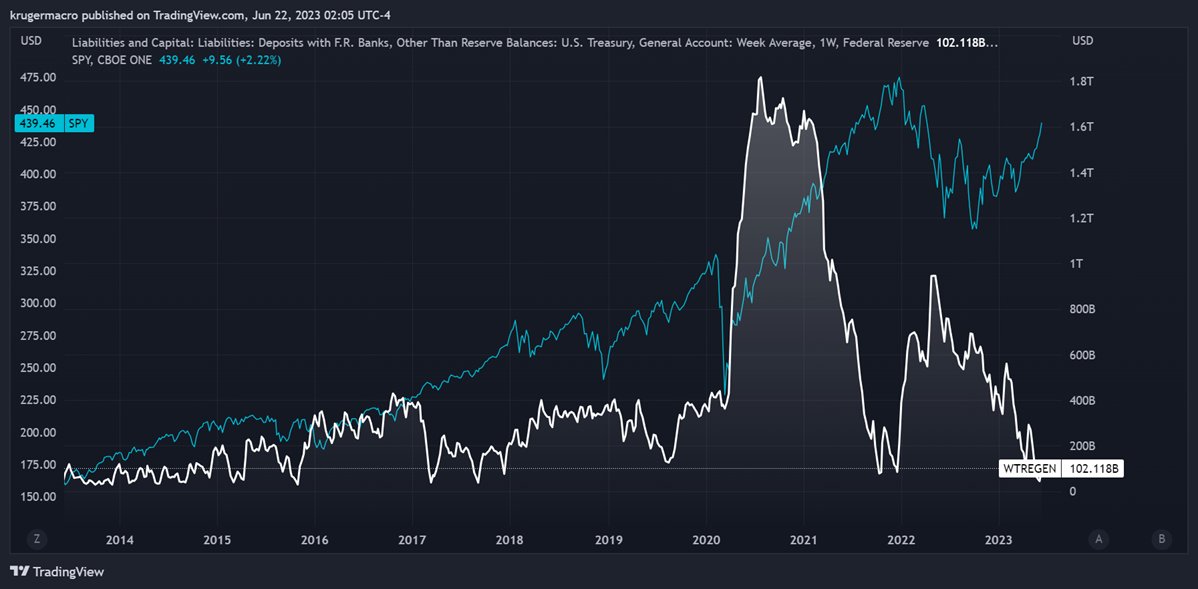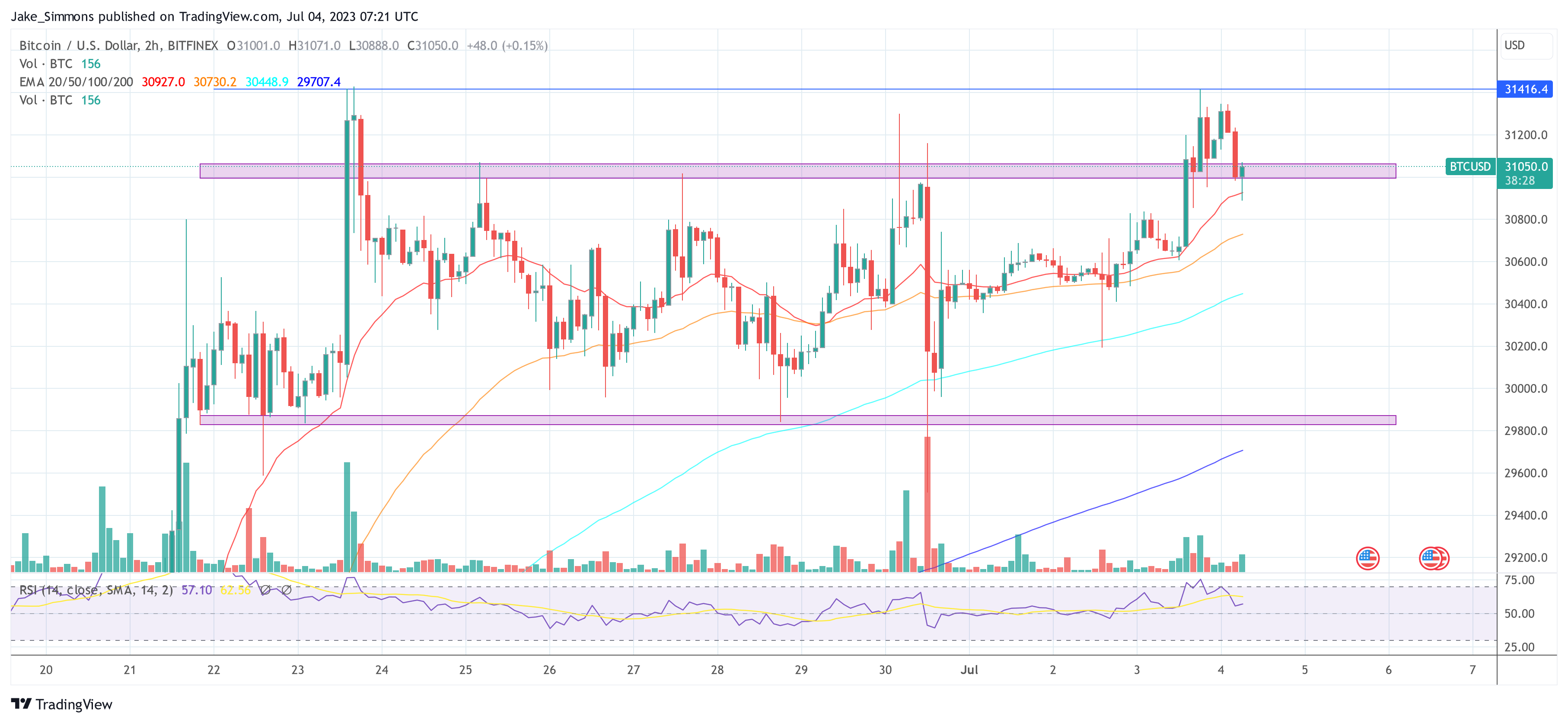In the world of financial markets, Bitcoin and crypto, fear and uncertainty often dominate the headlines. Over the past few months, there has been growing speculation about an impending recession and the possibility of a major crash in risk assets. Theses such as Bitcoin will rise to $40,000 and then crash are currently in abundance.
While the majority of analysts expect a recessionary crash, with the timing being hotly disputed, macro analyst Alex Krueger presents a compelling case for why such fears may be unfounded. In his research report, Krüger debunks prevalent bearish theses and sheds light on why he remains bullish on risk assets, including Bitcoin and cryptocurrencies.
1/ A recession is imminent, risk assets are expensive, and stocks always bottom during deleveraging driven recessions.
Is a major crash inevitable?
Not at all
In this research report we explore how prevalent bearish theses are flawed and why we are bullish on risk assets. pic.twitter.com/6b456Pvz2l
— Alex Krüger (@krugermacro) July 3, 2023
Debunking Bearish Theses For Risk Assets Like Bitcoin
According to Krüger, the upcoming recession, if any, has been one of the most widely anticipated in history. This anticipation has led to market participants and economic actors preparing themselves, thereby reducing the probability and potential magnitude of the recession. As Krüger astutely points out, “What truly matters is not if data comes in positive or negative, but if data comes in better or worse than what is priced in.”
One flawed notion often associated with recessions is the belief that risk assets must bottom out when a recession occurs. Krüger highlights the limited sample size of US recessions and provides a counterexample from Germany, where the DAX has reached all-time highs despite the country being in a recession. This serves as a reminder that the relationship between recessions and risk assets is not as straightforward as some might assume.
Valuations, another key aspect of market analysis, can be subjective and dependent on various factors. The analyst emphasizes that biases in data and timeframe selection can significantly impact valuations. While some metrics might suggest overvaluation, Krüger suggests looking closer at fair pricing indicators, such as the forward price-to-earnings ratio for the S&P 500 ex FAANG. By taking a nuanced approach, investors can gain a more accurate understanding of the market landscape.
Furthermore, the emergence of artificial intelligence (AI) presents a revolutionary opportunity. Krüger highlights the ongoing AI revolution, comparing it to the transformative power of the internet and industrial revolution. He notes that AI has the potential to replace a significant portion of current employment and boost productivity growth, ultimately driving global GDP higher. Krüger says, “Is an AI bubble forming? Likely so, and it is just getting started!”
Addressing concerns over liquidity, Krüger challenges the belief that liquidity alone drives risk asset prices. He argues that positioning, rates, growth, valuations, and expectations collectively play a more significant role. While the refilling of the Treasury General Account (TGA) has been currently viewed by a few analysts as a potential headwind for Bitcoin and crypto, Krüger points out that historical evidence suggests the TGA’s impact on the market has been minimal. He argues:
The TGA is known to be decorrelated from risk assets for very long periods of time. In fact, the four largest TGA rebuilds over the last two decades have had a minimal impact on the market.

The Best Is Yet To Come
Considering the monetary policy landscape, Krüger notes that the tightening cycle by the US Federal Reserve is nearing its end. With the majority of rate hikes already behind us, the potential impact of a few additional hikes is unlikely to cause a significant shift. Krüger reassures investors that the Fed’s tightening cycle is nearly 90% complete, thus reducing the perceived risk of a crash in risk assets.
Positioning is another factor that Krüger highlights as being cash-heavy, as indicated by record-high money market funds and institutional holdings. This suggests that a significant portion of market participants have adopted a cautious approach, which could serve as a buffer against any potential downside. Krüger states:
According to the ICI, money market funds hit a record $5.4 trillion, while institutions hold $3.4 trillion as of June 28th, roughly 2% above the prior highest level on record, which happened in May 2020, the darkest point of the pandemic.
All in all, Krüger’s analysis provides a refreshing perspective amidst a wave of bearish sentiment. While market conditions remain unpredictable, Krüger concludes:
Everyone is bearish. But the recession has been front-run, AI revolution is real, the Fed is almost done, and the market is cash heavy. We see no reason for changing our bullish stance, which we’ve held for all of 2023. The trend is your friend. And the trend is up.
At press time, the Bitcoin price was up 1.2% in the last 24 hours, trading at $31,050.

Featured image from iStock, chart from TradingView.com
